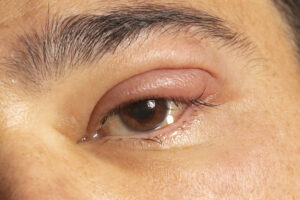An eye disease known as retinal detachment occurs when the retina, a layer of tissue at the back of the eye, is pulled forward, and detaches from the tissues at the back of the eye. A retinal detachment is a dangerous eye disorder that requires immediate treatment to repair, or you run the risk of irreversible vision loss due to the inability of the retina to function normally.
Types:
There are three distinct forms of retinal detachment, which are as follows:
Rhegmatogenous (reg-ma-TODGE-uh-nus)
The majority of people suffer from this form of retinal detachment. Rhegmatogenous detachments are brought on by a hole or tear in the retina, which enables fluid to flow through and accumulate beneath the retina.
The accumulation of this fluid results in the retina becoming detached from the tissues underneath it. Vision loss can result from the detached parts of the retina losing their blood supply and not being able to function.
Aging is the factor that most often contributes to rhegmatogenous separation. As we age, the gel-like substance that fills the inside of your eye may alter in consistency, shrink, or become more liquid.
Posterior vitreous detachment (PVD) is the natural process of the vitreous layer detaching itself from the retina’s surface without causing any difficulties. A tear is simply a complication that can arise from this separation. Sometimes, when the vitreous detaches from the retina, it can pull on the retina with sufficient force to cause a tear.
Tractional
Scar tissue on the retina can lead to this form of retinal detachment. This kind of retinal detachment occurs when the retina peels away from the back of the eye. People who have diabetes or other illnesses that are not well managed are often the ones who are diagnosed with tractional separation.
Exudative
This kind of retinal detachment is characterized by fluid accumulation behind the retina, but there are no breaks or holes in the retina itself. Inflammatory illnesses, eye injuries, tumors, and age-related macular degeneration are some of the conditions that may lead to exudative detachment.
Symptoms
The actual process of retinal detachment does not cause any discomfort. However, there are nearly always warning signs that arise before the problem develops or progresses, such as:
- The unexpected emergence of many floaters in your line of sight. These often look like a swarm of flies.
- Camera-like flashes in one or both eyes (photopsia)
- Hazy vision
- Vision loss in the periphery, or sides, of your vision that gradually worsens
- A shadow that resembles a curtain blocking your line of sight
What do you do in case of an emergency?
If you have any of the above symptoms, and especially if you have several of them, it is a medical emergency. In that case, call us for an emergency appointment as soon as possible. If we are closed and you cannot access another clinic, proceed to the hospital’s emergency department instead.








